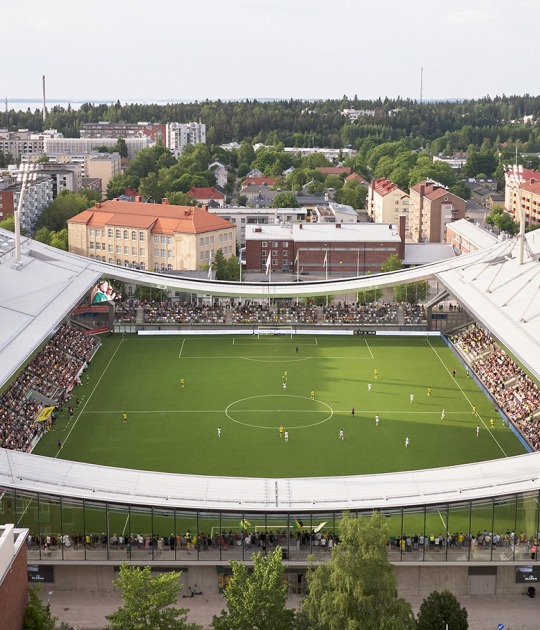Kunstsilo art gallery houses the private Tangen Collection, the largest collection of Nordic modern art in the world, and the Kunstsilo permanent collections, with more than 5,500 works of art, by more than 300 artists from Finland, Denmark, Iceland, Sweden and Norway dating from the years 1910 to 1990. In addition, there will be international digital contemporary art, temporary exhibitions and an expanded offering with conferences, concerts, gastronomic experiences, workshops, lounges and events.
The architects were faced with the challenge of how to maintain the heritage value of the 1930s grain silo while turning it into a new contemporary art museum. Art collector Nicolai Tangen was the first to discover the building's potential as an art space after its closure in 2006.
The structure, which was made up of 30 concrete cylinders, which could hold up to 15,000 tons of grain, and which has an interior height of 37 meters high, has been cut out, carved to form a large reception space, reminiscent of great cathedrals. European, accompanied by a large communication core 21 meters high.
Around this space are located 25 exhibition rooms organized on three floors, most of them in two adjoining extensions (one of them rebuilt again due to its advanced state of deterioration), occupying an area of 3,300 square meters. A space that achieves its unity through the exposure of the exposed concrete of the structure and that gains its value as a space thanks to the contrast with the exposed elements, generating a "passive white box architecture" according to the architects.
There is also a digital gallery on the second floor and includes conservation areas, offices and a "cultural school" for children, as well as a rooftop bar surrounded by terraces protected with glass cylinders that replicate the modulation of the rest of the building and They create the image of a large lighthouse.
“The Kunstsilo proposal harnesses all the expressive power of a silo (an existing heritage building) in order to generate a diverse and complex urban space with a variety of spatial, programmatic and climatic characteristics. The proposal consists of a new museum, a performing arts school, a hotel and a building to be used as an incubator for artistic start-ups. The project strikes an elegant balance by combining respect for the qualities of the silo building with an imaginative attitude to the inherently sculptural and spatial experiences it offers. With a few cuts into the interior of the silo, an understated yet monumental volume is opened up with controlled top-lighting that gives the future museum a strong and unique character.”

Inauguration of Kunstsilo by Mestres Wägue, MendozaPartida and BAX studio. Photograph by Alan Williams.
Project description by Mestres Wåge Arquitectes, Mendoza Partida and BAX
The concept attempts to recover, quite simply, the natural presence that the existing silo construction already possesses, a space system of a great singular plastic quality, as the icon of the industrial zone. With regards to urban space, the cultural complex is organised through a públic square that defines the arrangement of the music school, the incubator and new Kunstsilo Museum. The scale of the public space favours an urban dynamic full of life, harmony, scale and variety.
With elegance and respect, a small volume of similar proportions is added to the silo construction, placed at the back of the building to one side, to define one of the small urban spaces that give life to the complex. With this simple action, and to emphasize the importance of the existing building, it is possible to incorporate the substantial programmatic requirements within the building. To give the greater urban feel and character that the museum requires, the ground floor opens in full to provide continuity to the public space and create friendly and straightforward access. On the roof deck, everything is within a glass enclosure which, as a sort of greenhouse and urban beacon, welcomes a future lookout point and space for public events that strengthens even more the presence of the Kunstsilo in the environment.
To enhance the plastic quality of the existing construction and make the museum visitors participate in its spatial singularity, the silo interiors are emptied, to accommodate a large triple-height foyer functioning as the heart of the museum. The exhibition areas are organized around this space, and alternate a rich and fluid path around the cylindrical structures, that manifest in different ways along the museum space. There is a wide variety of spaces, in size and height, that give the exhibitions the dimension they deserve. The proposal also uses the smaller size volume’s roof to create a terrace for outdoor exhibits overlooking the sea.
Structurally, the silo construction is understood as a single element, a continuous cantilever that manages to sustain itself through the perimeter elements that touch the ground. With this procedure, it is only necessary to reinforce the compression of the elements in the cut-out areas.











































































